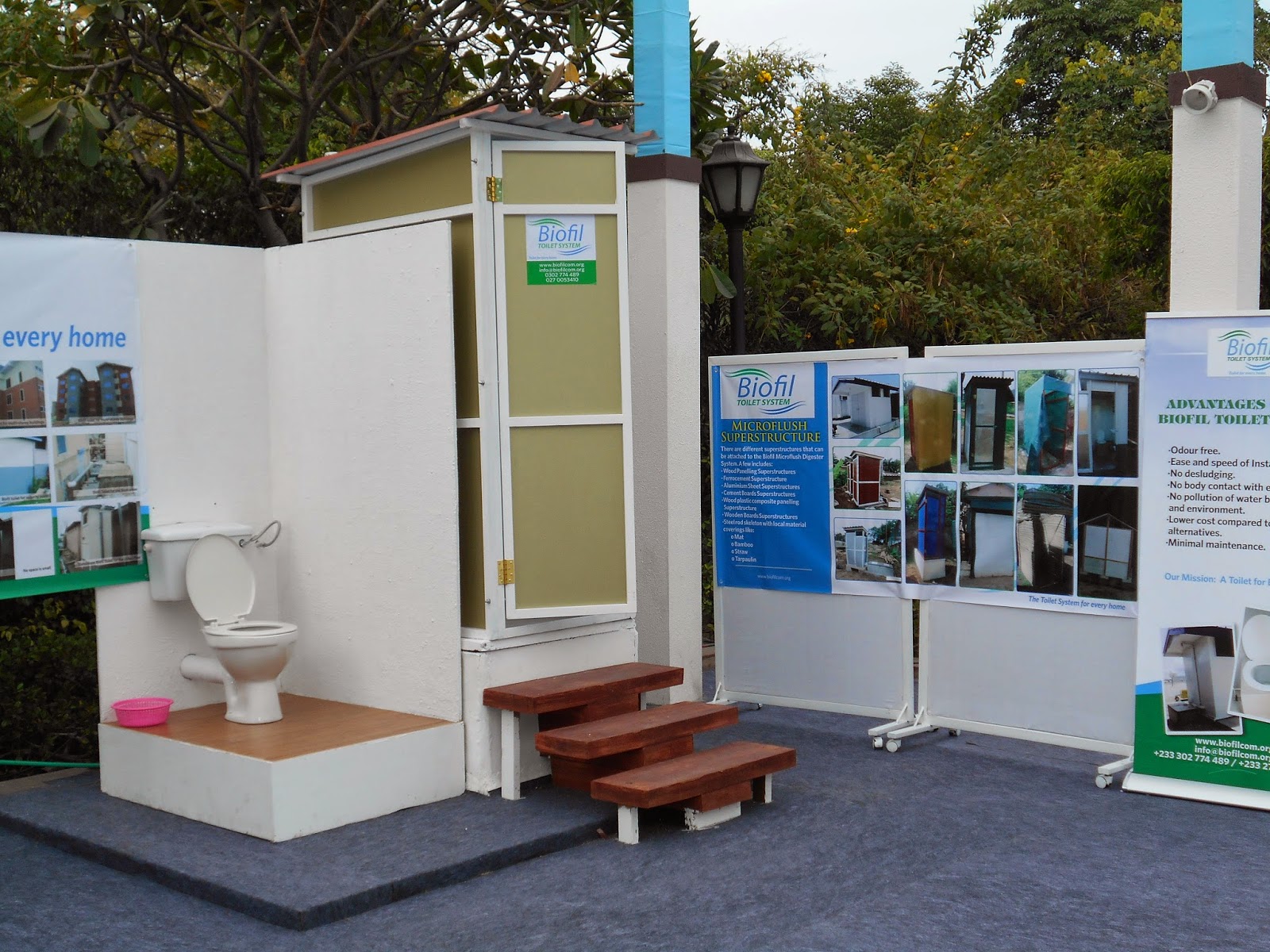 |
| The Silafrica Chief Sales and Marketing Officer, Mr Alpesh Patel displaying his wares |
The Silafrica Chief Sales and Marketing Officer, Mr Alpesh Patel said that the new technology dubbed 'AIM Toilet' is bound to make headlines on the continent because it is a 'do it yourself' product that doesn't require additional costs for masons.
"We are officially launching this new product in Kenya on April 1 this year then do the same in Tanzania. The machines and mouldings are already in place and so we are good to go," he said.
According to a 2010 brief policy document by Water Aid, data from UNICEF/WHO - Joint Monitoring Programme for water supply and sanitation shows that the coverage of improved latrine in Tanzania stands at just 24 per cent.
Sanitation particularly toilet construction, has been treated as a household issue and not a public good, although the public health benefits of universal coverage are considerable. Individual latrine construction or on-site sanitation has remained a solution for excreta disposal for more than 80 per cent of households. The costs of constructing and upgrading latrines are high, especially for the poorest Tanzanians.
Silafrica known in Tanzania as Simba Plastic Ltd is renowned in many parts of the country for being the first company to be involved in plastics and introduced SimTanks as well as the selling of Speedo and AIM pens.
Mr Patel said that unlike the conventional concrete that requires one to construct another after the pit latrine is filled needing one to move to another location, with the plastic slab, one just needs to pluck it off and can be reused continuously.
He said that the low cost technology has been designed in such a way that it needs minimal maintenance by cleaning it and is make of reenforced plastic that can withstand heavy weight and vandalism.
"There are other plastic slabs available but ours has the advantage of not having pins making everything detachable. The handle of the lip if lost can easily be replaced by any empty water bottle, " he explained.
 |
| The Silafrica Managing Director, Mr Akshay Shah (extreme right) explains how the plastic slabs work to visitors of the 2014 Reinvent the Toilet Fair |
The Selling Sanitation officer, Mr Michael Momanyi told this paper that the new plastic slap products designs are based on in-depth consumer research and address the features that consumers want most - affordability, durability, cleanliness and ease of use.
Mr Momanyi said that once an unknown quantity, Kenya's nascent on site sanitation market is now seen as a major opportunity and that the market for latrine slabs alone is projected to achieve 19 million US Dollars (approximately 1.6 billion Kenya Shillings) in 2014.
"While improved sanitation coverage has experienced a modest 5 per cent gain in the last 20 years, current market trends suggest an uptick in coverage increase over the short term," he said.
According to the Kenya Onsite Sanitation Market Intelligence October 2013 report, the projected sales of latrine slabs in terms of households is 626,800 and projected plastic product revenue by 2017 is 8.2 million US Dollars (698 million Kenya Shillings).
The World Bank Group's Selling Sanitation initiative is supporting the private sector to understand the opportunity and identity viable market entry strategies.
Dr Pathak said that using his twin pit latrine that doesn't require it to be connected to the sceptic tank and doesn't need frequent pumping of the waste, the questions of the day can be answered.
"In 1968, I was 'pregnant' with a child and I delivered it in 1970 and have been committed to it by mind, body and soul and that child in Sulabh. Like men deliver children, men deliver ideas. I have brought this child up, now it is the duty of the government to partner with NGOs that are committed to use and modify the model to their liking to other regions, Sulabh cannot be physically everywhere," he explained.
The Bill and Melinda Gates Foundation's Water, Sanitation and Hygiene programme has organised a fair dubbed 'Reinvent the Toilet Fair 2014' that focuses on the development of tools and technologies that can lead to radical and sustainable improvements in sanitation in the developing world.
The need for better sanitation in the developing world is clear. Forty percent of the world’s population—2.5 billion people—practice open defecation or lack adequate sanitation facilities, and the consequences can be devastating for human health as well as the environment.
Even in urban areas, where household and communal toilets are more prevalent, 2.1 billion people use toilets connected to septic tanks that are not safely emptied or use other systems that discharge raw sewage into open drains or surface waters.
Poor sanitation contributes to 1.5 million child deaths from diarrhea each year. Chronic diarrhea can also hinder child development by impeding the absorption of essential nutrients that are critical to the development of the mind, body, and immune system. It can also impede the absorption of life-saving vaccines.




















